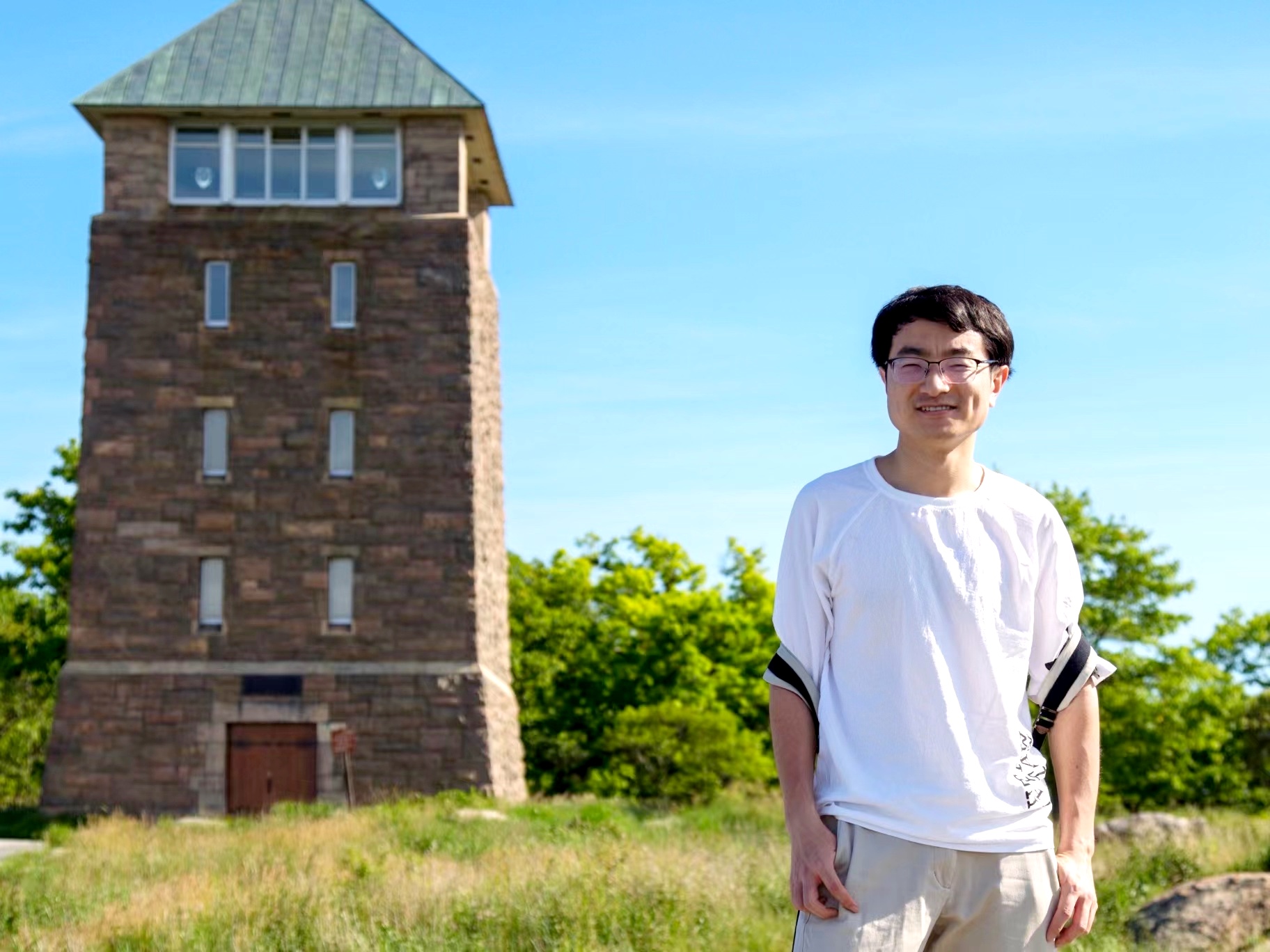
|
Jiaxiang Ren |
||
|
||
|
|
||
 |
|
|||||||||||
| I am a CS PhD student at the Department of Computer Science of Stony Brook University, under the supervision of Prof. Haibin Ling and Prof. Yingtian Pan. My research interests mainly focus on Computer Vision and pattern recognition. |
Publications
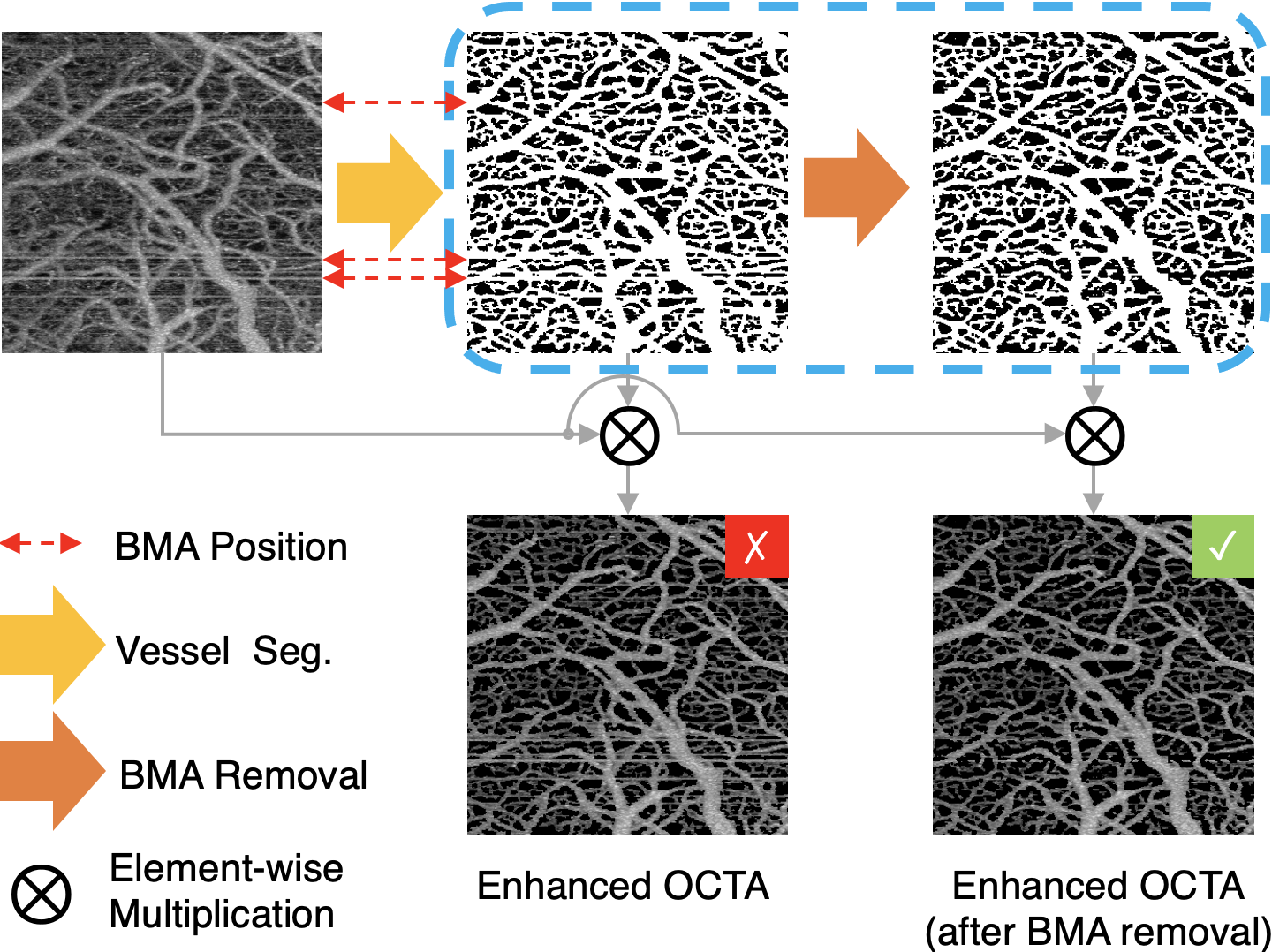
|
Jiaxiang Ren, Kicheon Park, Yingtian Pan, and Haibin Ling
IEEE / CVF Computer Vision and Pattern Recognition Conference(CVPR), 2022
Optical coherence tomography angiography (OCTA) is an important imaging modality in many bioengineering tasks. The image quality of OCTA, however, is often hurt by Bulk Motion Artifacts (BMA), which are due to micromotion of subjects and typically appear as bright stripes surrounded by blur areas. State-of-the-art BMA handling solutions usually treat the problem as an image inpainting one with deep neural network algorithms. These solutions, however, require numerous training samples with nontrivial annotation. Nevertheless, this context-based inpainting model has limited correction capability because it discards the rich structural and appearance information carried in the BMA stripe region. To address these issues, in this paper we propose a self-supervised content-aware BMA recover model. First, the gradient-based structural information and appearance feature are extracted from the BMA area and injected into the model to capture more connectivity. Second, with easily collected defective masks, the model is trained in a self-supervised manner that only the clear areas are for training while the BMA areas for inference. With structural information and appearance feature from noisy image as references, our model could correct larger BMA and produce better visualizing result. Only 2D images with defective masks are involved so our method is more efficient. Experiments on OCTA of mouse cortex demonstrate that our model could correct most BMA with extremely large sizes and inconsistent intensities while existing methods fail. |
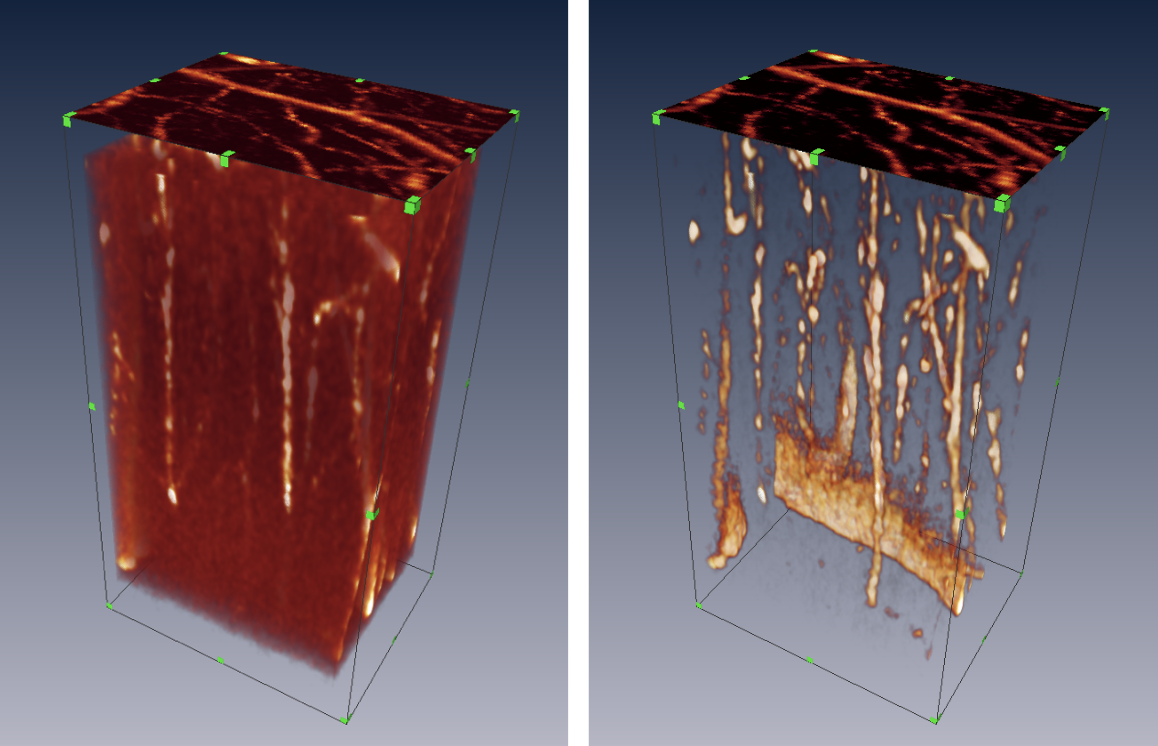
|
Yingtian Pan, Kicheon Park, Jiaxiang Ren, Nora D. Volkow, Haibin Ling, Alan P. Koretsky, Congwu Du
Nature Communications Biology, 2023 (IF: 6.548)
Cerebral blood flow (CBF) is widely used to assess brain function in normal and diseased states. However, most preclinical CBF imaging is performed under anesthesia, thus brain functional changes are confounded by anesthetic effects. Due to motion artifacts and high background noise, high spatiotemporal-resolution CBF imaging of awake animals is challenging, particularly for Doppler-based flow imaging modalities. Here, we report ultrahigh-resolution optical coherence Doppler tomography (μODT) for 3D imaging of CBF velocity (CBFv) network dynamics in head- restrained awake-behaving animals by developing self-supervised deep-learning approaches for effective image denoising and motion-artifact removal. |
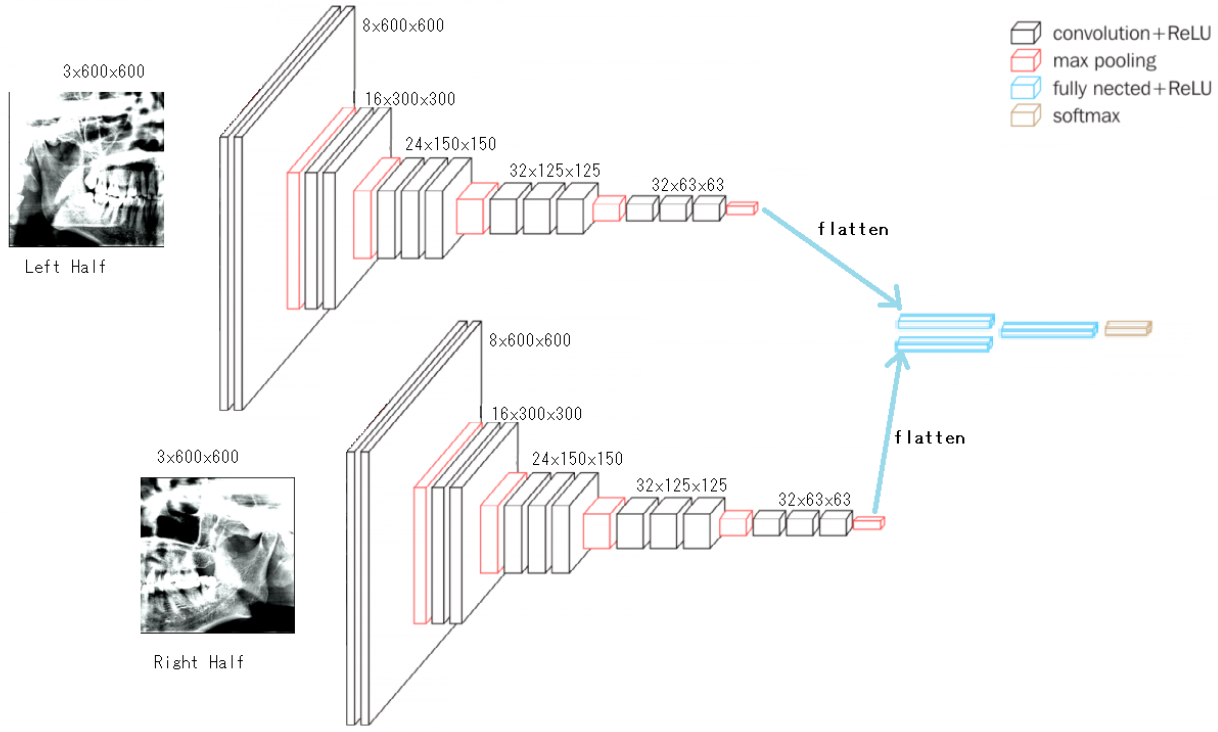
|
Yasha Singh, Vivek Atulkar, Jiaxiang Ren, Jie Yang, Heng Fan, Longin Jan Latecki, Haibin Ling
43rd Annual International Conference of the IEEE Engineering in Medicine & Biology Society (EMBC), 2021
Recent studies have shown that Dental Panoramic Radiograph (DPR) images have great potential for prescreening of osteoporosis given the high degree of correlation between the bone density and trabecular bone structure. Most of the research works in these area had used pretrained models for feature extraction and classification with good success. However, when the size of the data set is limited it becomes difficult to use these pretrained networks and gain high confidence scores. In this paper, we evaluated the diagnostic performance of deep convolutional neural networks (DCNN)- based computer-assisted diagnosis (CAD) system in the detection of osteoporosis on panoramic radiographs, through a comparison with diagnoses made by oral and maxillofacial radiologists. With the available labelled dataset of 70 images, results were reproduced for the preliminary study model. Furthermore, the model performance was enhanced using different computer vision techniques. Specifically, the age meta data available for each patient was leveraged to obtain more accurate predictions. Lastly, we tried to leverage these images, ages and osteoporotic labels to create a neural network based regression model and predict the Bone Mineral Density (BMD) value for each patient. Experimental results showed that the proposed CAD system was in high accord with experienced oral and maxillofacial radiologists in detecting osteoporosis and achieved 87.86% accuracy. |
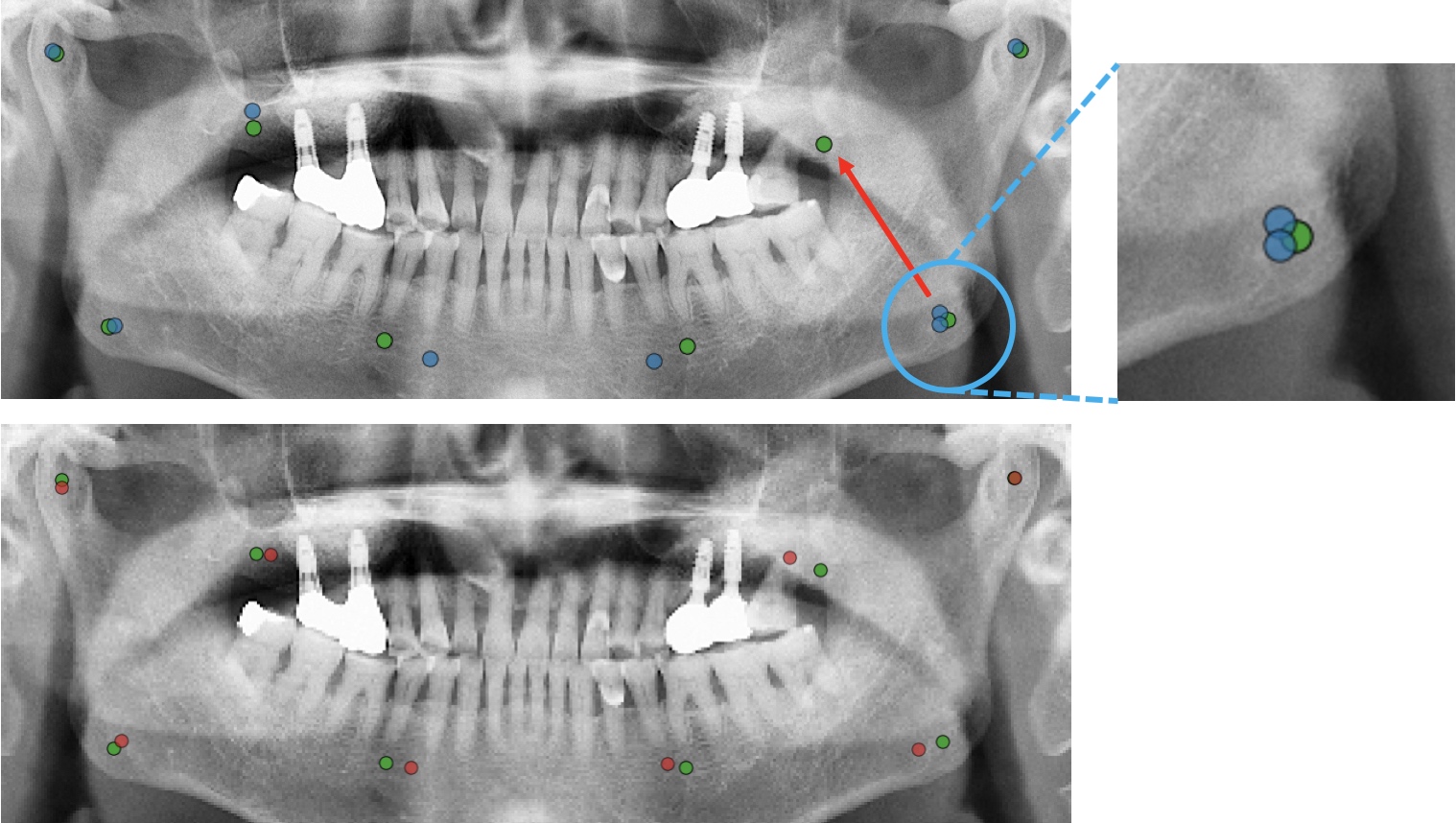
|
Jiaxiang Ren, Heng Fan, Jie Yang, and Haibin Ling
42rd Annual International Conference of the IEEE Engineering in Medicine & Biology Society (EMBC), 2020
Dental panoramic radiography (DPR) images have recently attracted increasing attention in osteoporosis analysis because of their inner correlation. Many approaches leverage machine learning techniques (e.g. , deep convolutional neural networks (CNNs)) to study DPR images of a patient to provide initial analysis of osteoporosis, which demonstrates promising results and significantly reduces financial cost. However, these methods heavily rely on the trabecula landmarks of DPR images that requires a large amount of manual annotations by dentist, and thus are limited in practical application. Addressing this issue, we propose to automatically detect trabecular landmarks in DPR images. In specific, we first apply CNNs-based detector for trabecular landmark detection and analyze its limitations. Using CNNs-based detection as a baseline, we then introduce a statistic shape model (SSM) for trabecular landmark detection by taking advantage of spatial distribution prior of trabecular landmarks in DPR images and their structural relations. In experiment on 108 images, our solution outperforms CNNs- based detector. Moreover, compared to CNN-based detectors, our method avoids the needs of vast training samples, which is more practical in application. |
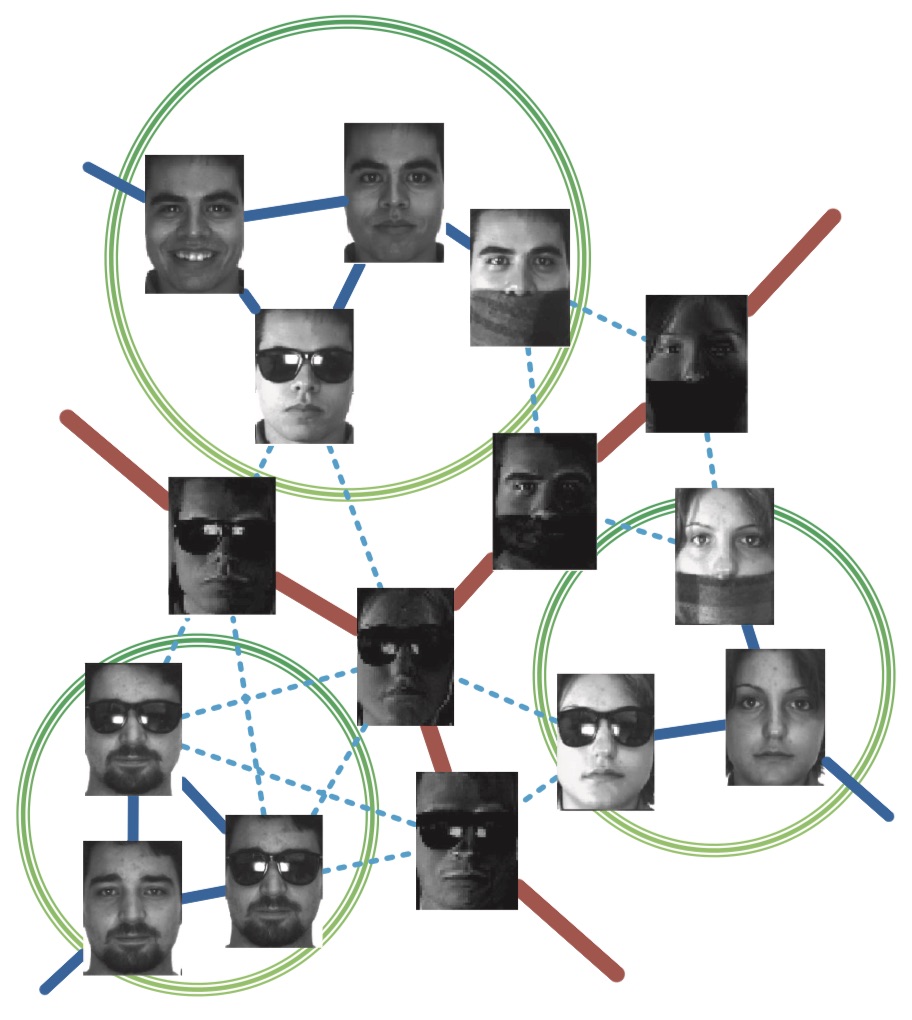
|
Jiaxiang Ren, Shengjie Zhao, Kai Yang, and Brian Zhao
IEEE International Conference on Multimedia & Expo Workshops(ICMEW), 2017
Project | Paper | Slides | Bibtex | Abstract High-dimensional data are ubiquitous in most real-world research areas, such as machine learning, image processing and so on. Actually, high-dimensional data that belong to the same classes tend to gather in their own low-dimensional subspaces. Recently, many subspace recovery algorithms based on the sparse representation such as Sparse Subspace Clustering (SSC), Low-Rank Representation (LRR) and their variants are proposed to address the subspace clustering problems. |
Projects

|
Jiaxiang Ren, Lingyun Huang
Project
Tuberculosis is a serious disease that affects lots of people in developing countries. To treat TB patients, an accurate diagnosis is needed firstly.
X-ray radiography is often used for TB screening among high risk populations but manual examining cheXray is time consuming. For improving efficiency and reducing screening cost, we develop a series models to classify normal and TB patients' cheXray images, find and mark related infections within chest. |

|
Jiaxiang Ren, Liangxin Gao, Yanbo Zhang
Kaggle Competition (Rank: 39/1499, Top 3%)
Pneumonia accounts for over 15% of all deaths of children under 5 years old internationally. In 2015, 920,000 children under the age of 5 died from the disease. To improve the efficiency and reach of diagnostic services, the Radiological Society of North America (RSNA) has reached out to machine learning community of Kaggle and collaborated with the US National Institutes of Health, The Society of Thoracic Radiology, and MD.ai to develop a rich dataset for this challenge. |

|
Jiaxiang Ren, Aimee Liu, Jin Ma
Project
Atractylodes lancea is a high-demand Chinese herbal medicine (annual output > 1,000 tons). The main medicinal part of Atractylodes lancea is the root, which is very similar to the root of Atractylodes macrocephala.
Only experienced personnel could distinguish them correctly. As a result, it is difficult to meet the requirement of production and purity at the same time. Separating these two similar plants during cultivating is a solution to increase the yield of high-purity medicine.
However, when cultivating, most plants are without distinguishable flowers as illustrated in the left image. To this end, we take advantage of transfer-learning to solve this fine-grained categorization problem. |
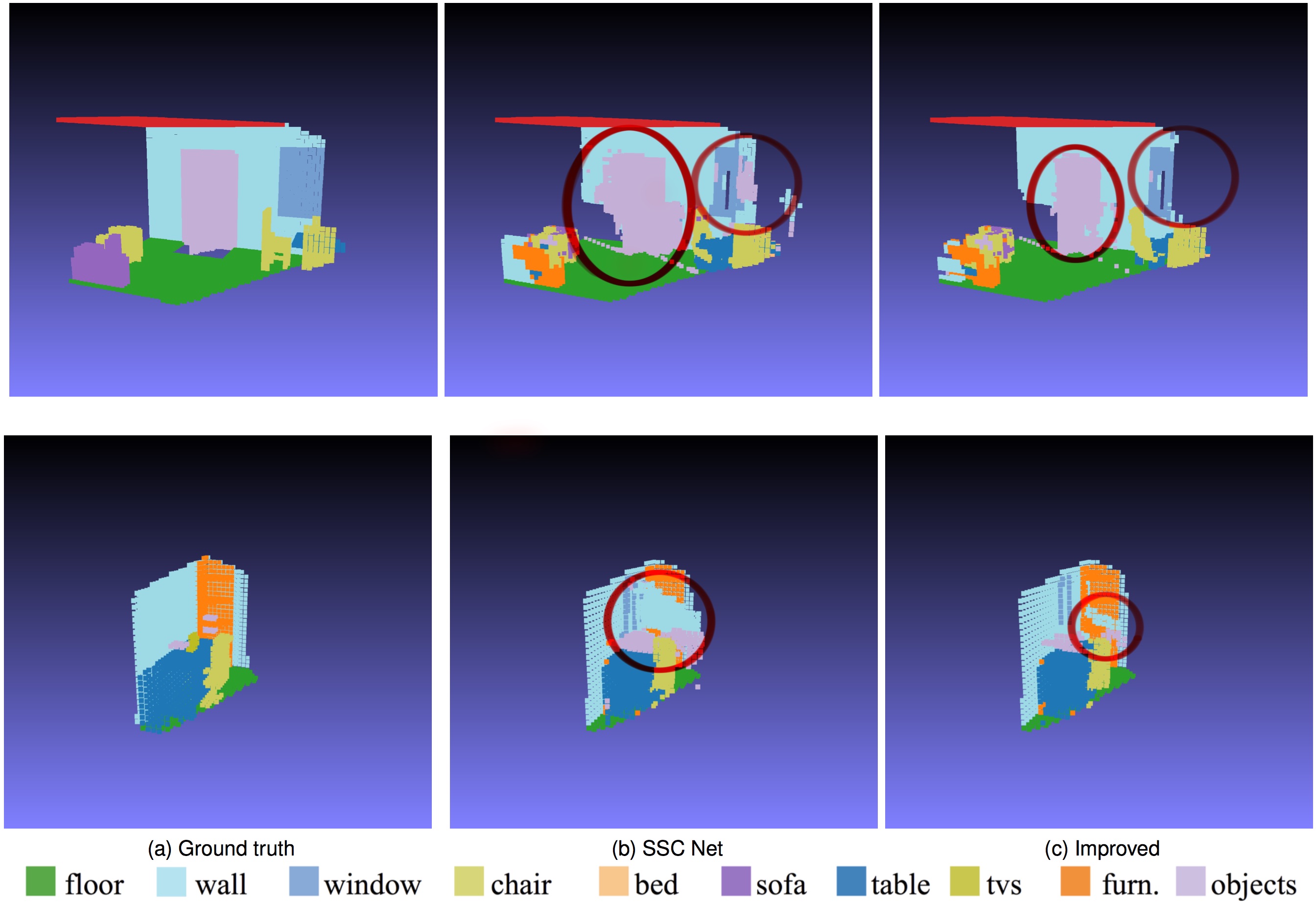
|
Jiaxiang Ren, Shengjie Zhao
Graduate Research
|
Awards